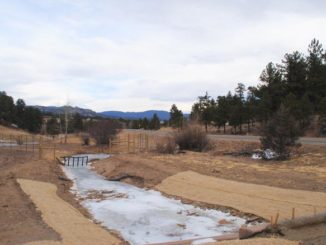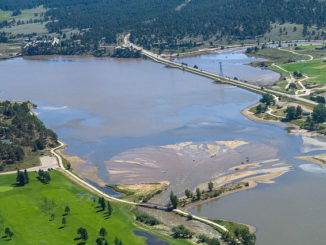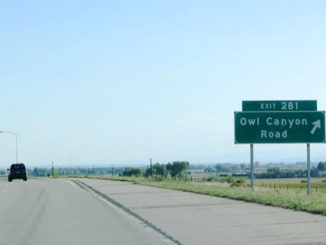
By: Marty Metzger
“Oh, come on, come on, I’m late for work! What the heck’s going on up there?”
You crane your neck out the window, but the view ahead is blocked by that nasty semi whose bumper you almost ate. Next, you glance in your rearview mirror. The driver behind is glaring at you with laser-accurate eyes. He hates you. Your face heats up.
“Not my fault, buddy!” you grumble at your steering wheel.
Sound familiar? A lengthy line of orange cones or barrels, like regimented little soldiers, eventually appear as you inch your way forward. They answer your irate question far more efficiently than did honks or socially unacceptable comments. What the heck going on up ahead is roadwork; paving, to be exact. Aaargh.
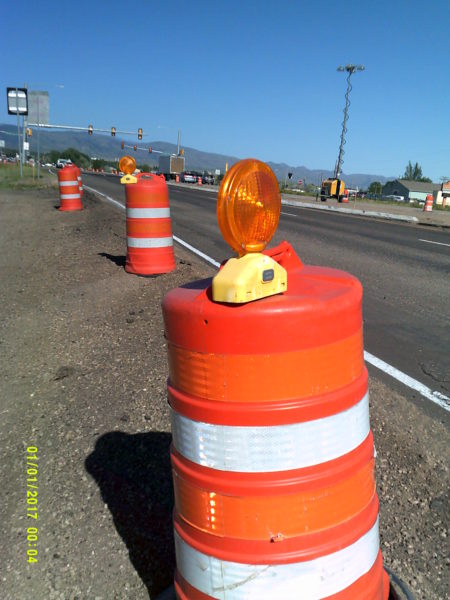
Temporary inconvenience is sometimes a small price to pay for greater convenience later on. The task of Larimer County Engineering and its Department of Public Works/Road & Bridge is to establish and maintain efficient, safe corridors of travel for area residents and visitors.
Eric Purcell, Construction Manager, explained some of the reasons why we should all stay sane and enjoy the ride.
The geographical reach of both departments’ work is within unincorporated areas of Larimer County. But just what and who decides when it’s time to set up those pretty orange zones?
Decisions are driven by safety concerns, traffic volume and repair necessity. This “capacity need” can be generated by results of those traffic study rubber hoses we occasionally run over to calculate vehicle volume; reported accidents in a particular area; concerned phone calls or emails from the public.
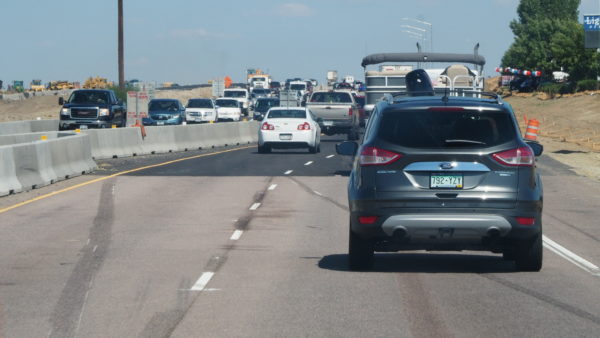
The Engineering Department is responsible for new bridge construction, adding features such as turn lanes, and widening existing/building new roads. Its employees also manage contractors throughout each project by physically inspecting each day’s work. If an error is detected, it’s pointed out in real time and corrected.
Road & Bridge conducts routine maintenance such as crack seal. Its in-house employees also grade all gravel roads.
Purcell noted that providing alternative, safe entry into properties is a high priority during road work. This cleared path can be either around or through the construction project, determined on a case-by-case basis. The goal is to provide secondary access for, and minimize impact on, property owners. Purcell said there’s sometimes a fine balance between access and project timelines.
Safety, however, is always priority. Drivers can do their part by remaining alert and aware in work zones. Never allow impatience to make dangerous decisions that might injure or kill someone.
One-lane roads undergoing work are controlled by flaggers or, if along a main highway, automated lights. Humans with Stop/Yield signs are also frequently present, and workers communicate along the route via radios; the Traffic Control Supervisor monitors overall safety. Everybody wears safety vests and/or reflective coats and pants.
Including support staff, the Engineering Department currently employs 40 individuals who design and manage projects. The actual labor is bid out to a general contractor.
But why does it seem that all forward momentum slows or stops during rush hour? Larimer County’s road work is almost always done during daylight hours due to cost considerations. At the state level, traffic volume is much higher, so it makes sense to pay a contractor for overnight work.
Environmental impacts depend on the size of a project—the larger the job, the more hoops there are to jump through. In the beginning stages, the county puts up signs and contacts local property owners regarding open-house meetings. These public forums elicit questions such as the length of construction work; how much additional traffic might be rerouted; if project dates can be changed; costs.
Purcell noted that some work is in conjunction with the federal government and funding can be available through FEMA or other grants. For example, Larimer County is still on the tail end of 2013 flood repairs.
Climate extremes certainly take their toll on our road surfaces. Freeze/thaw cycles cause significant damage and also cause rocks to dislodge and fall. Both situations must be addressed by Road & Bridge.
It pays to plan ahead. Upcoming major overlay projects (fresh over existing asphalt or concrete pavement) include:
- Red Feather Lakes— mid-July into September 2018
- CR 70 and CR17— late autumn 2018 or spring 2019
In Loveland, a new bridge over Namaqua Road is currently in its design stages.
Additional project dates can be found at www.larimer.org/roads-transportation
Support Northern Colorado Journalism
Show your support for North Forty News by helping us produce more content. It's a kind and simple gesture that will help us continue to bring more content to you.
BONUS - Donors get a link in their receipt to sign up for our once-per-week instant text messaging alert. Get your e-copy of North Forty News the moment it is released!
Click to Donate
